Complete Solutions to Exercise of chapter HYDROCARBONS (ALKENES) of Class 11 book with complete answers and questions
| Class 11 | CHEMISTRY |
| Chapter | HYDROCARBONS (ALKENES) |
| MS CHOUHAN | Exercise |
| Number Of Questions | 100 |
| Academic Year | 2023-24 |
(R)-3-bromocyclopentene (shown below) reacts with `Br_(2)//C Cl_(4)` to form two products, Y and Z, Y is not optically active (does not rotate plane-polarized light). What is the structure of Y

View Solution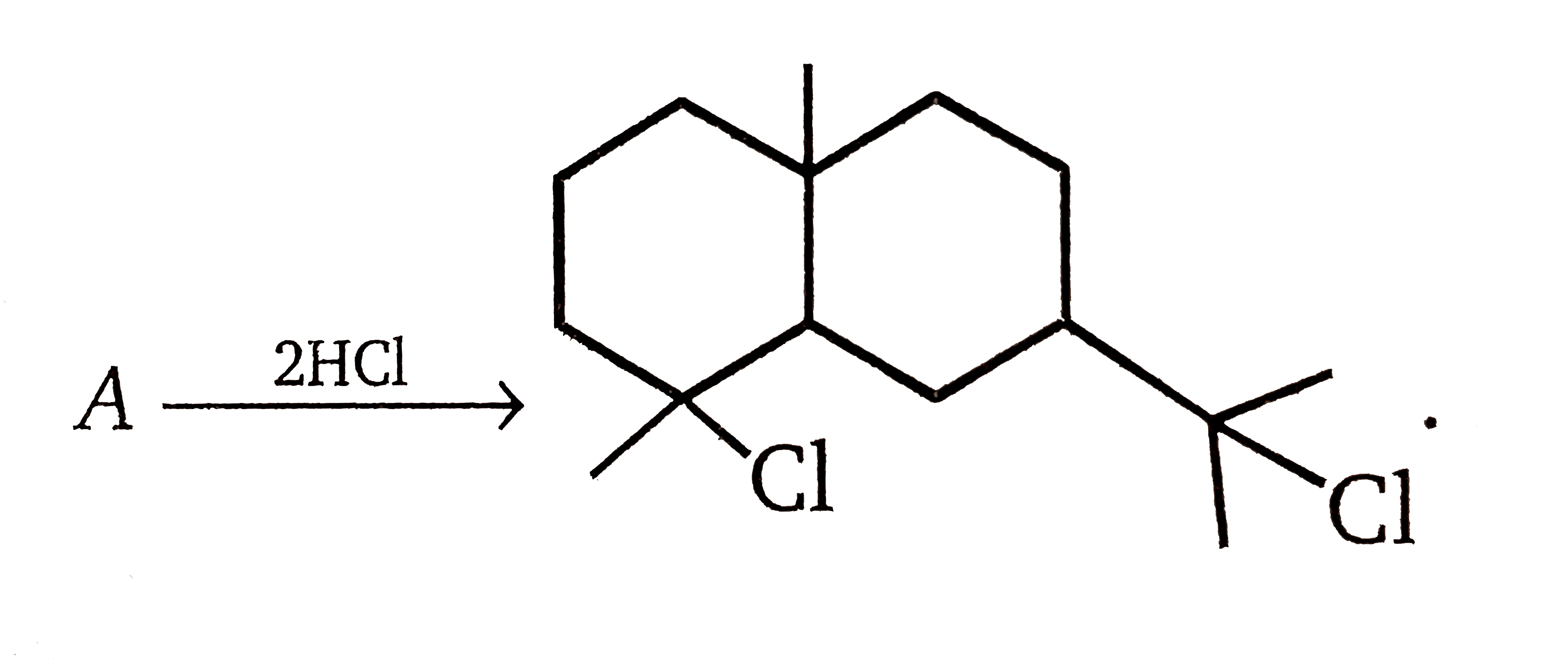 . Reactant (A) can be:
. Reactant (A) can be:
View Solution Major product of the reaction is:
Major product of the reaction is:
View Solution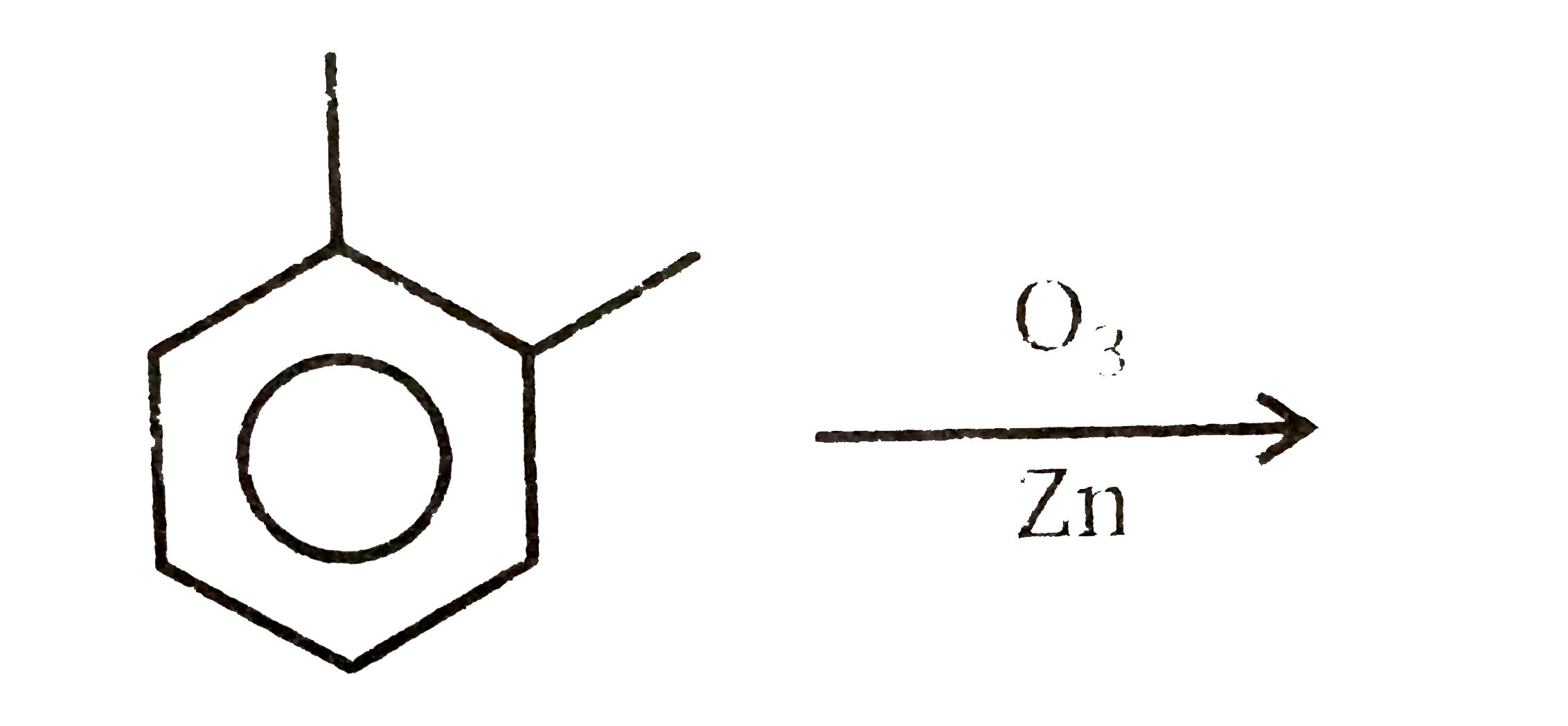
Which of the following products cannot be obtained in ozonolysis of o-xylene?
View Solution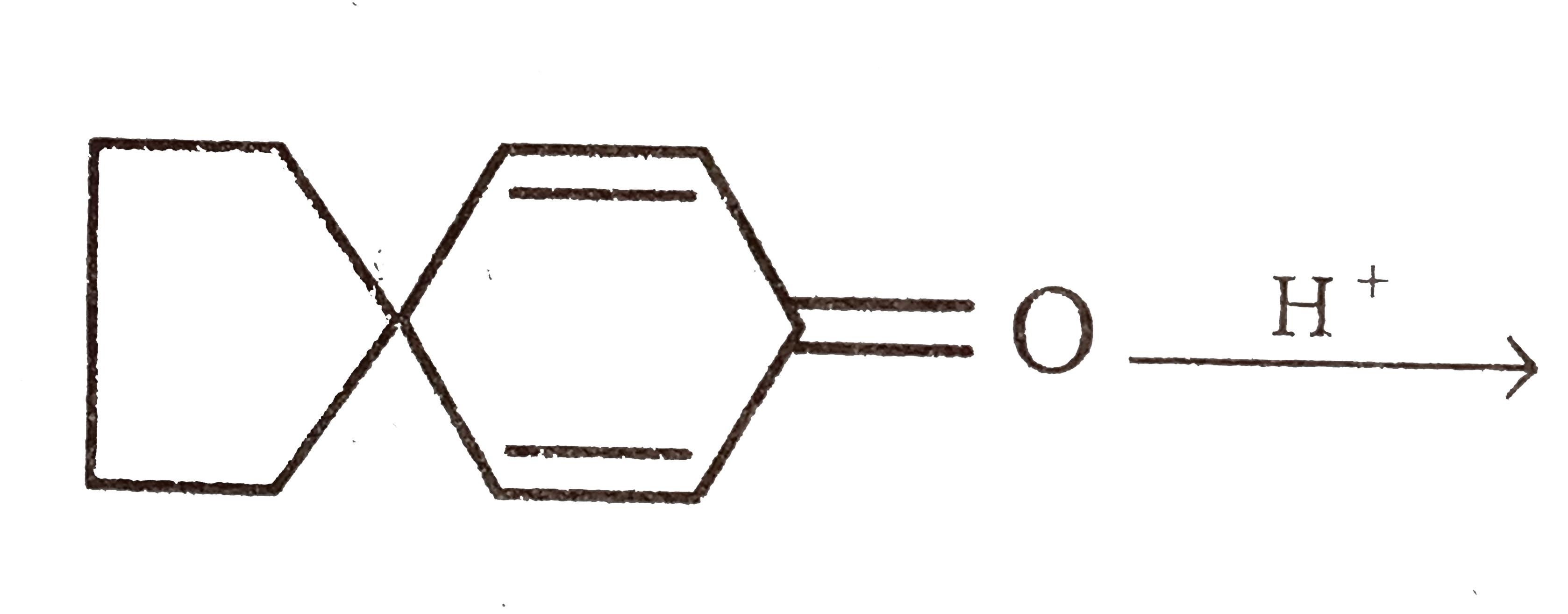 Major product of the reaction is:
Major product of the reaction is:
View Solution`{:(CH_(2)-CO_(2)K),("|"),(CH_(2)-CO_(2)K):} overset("electrolysis")tounderset("(major)")((A))` (Kolbe reaction electrolysis)
Product (A) of the reaction is:
View Solution product (C) of the reaction is:
product (C) of the reaction is:
View Solution W. product W is:
W. product W is:
View SolutionThe reaction of propene with `H_(3)O^(+)` will proceed with which of the following intermediates.
View SolutionWhich of the following bromides is the major product of the reaction shown below, assuming that there are no carbocation rearrangement?

View SolutionWhich of the following reactions results in the formation of a pair of diastereomers?
View SolutionWhat is a likely product of the reaction shown?
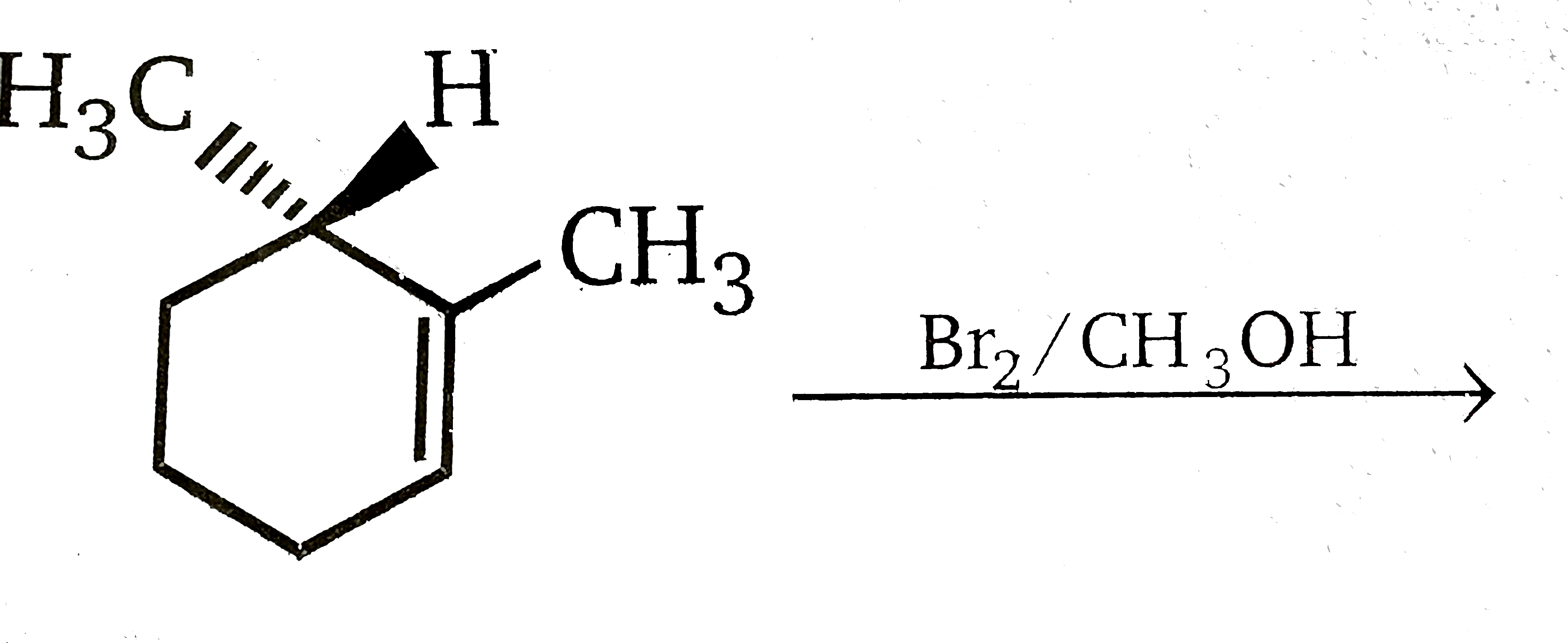
View SolutionWhich of the following, when undergoing addition of HBr, will form ONLY a pair of diastereomers?
View SolutionHow many transition states and intermediates will be formed during the course of following reaction?

View SolutionProduct of which of the following reactions, is racemic mixture?
View SolutionThe product(s) of the following reaction can best be described as:
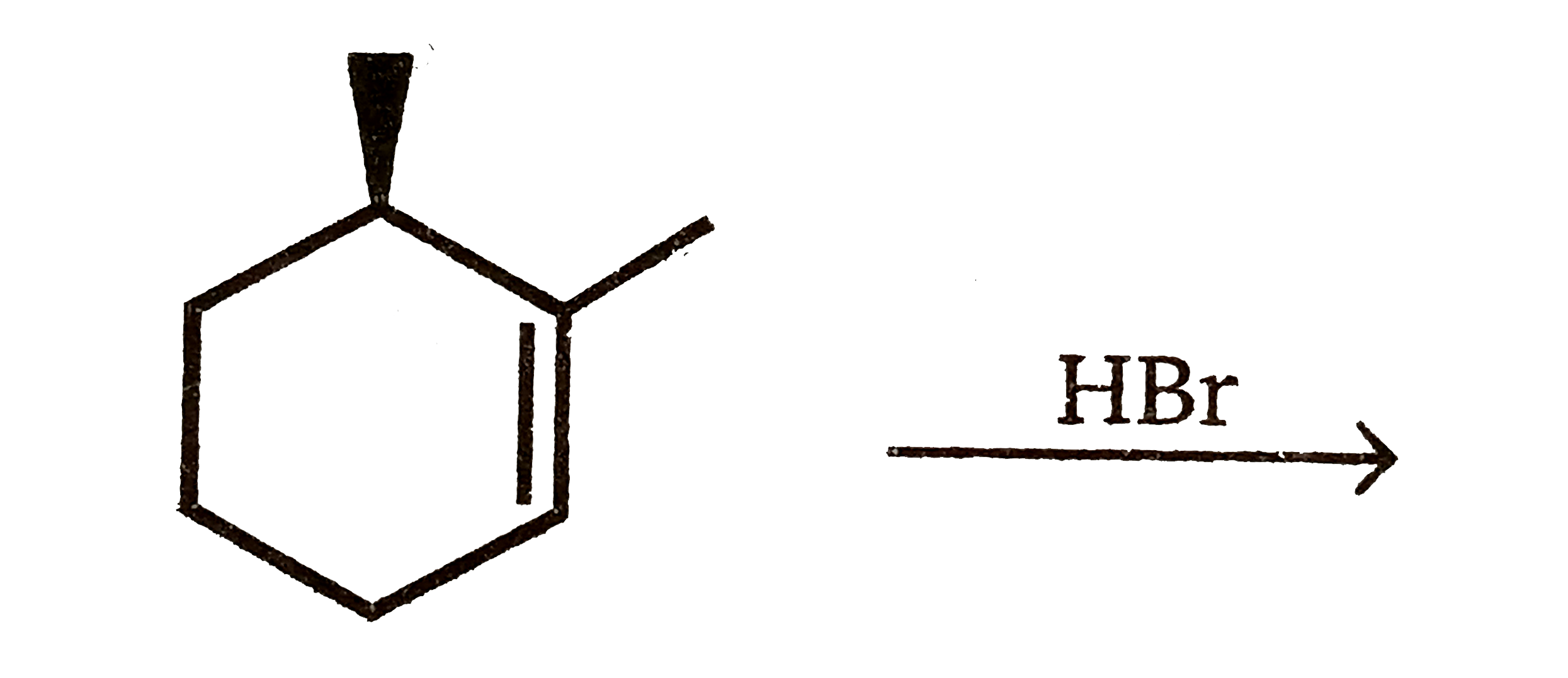
View SolutionTaking into account the stability of various carbocations and, as well as the rules governing mechanism of carbocation rearrangements, which reaction is most likely to occur during the given reaction?

View SolutionConsider the following reaction in which the intermediate carbocation loses `H^(+)` to give final product?

Which of the following energy profiles best represents the overall reaction?
View SolutionMethyl vinyl ether, `H_(2)C=CH-OCH_(3)`, reacts with `Br_(3)//CH_(3)OH`. If methanol is reacting as water would, and if this reaction follows a typical mechanism of electrophilic addition, what would be the expected product?
View Solution2, 4-hexadiyn`(C_(6)H_(6))` is allowed to react with Li in `NH_(3)`(liq). The product obtained is treated with 2 equivalent of `Cl_(2)` in `C Cl_(4)`. Which of the following constitution isomers are possible products?

View SolutionWhich of the following is among the major products of the reaction of (E)-3-methyl-2-pentene with `BH_(3)` in THF followed by the addition of `H_(2)O_(2)//HO^(-)`?
View SolutionCompare rate of dehydration of (I),(ii) and (iii) by conc. `H_(2)SO_(4)`.

View SolutionHow many products will be formed in this reaction?

View Solution . Product (A) of the reaction is:
. Product (A) of the reaction is:
View Solution`CH_(3)-underset(CH_(3))underset(|)overset(CH_(3))overset(|)(CH)-H_(2)C=CH_(2)overset(HF)underset(2-5^(@)C)(to)(A)`, (A) is:
View SolutionPredict the product (A) of the following reaction
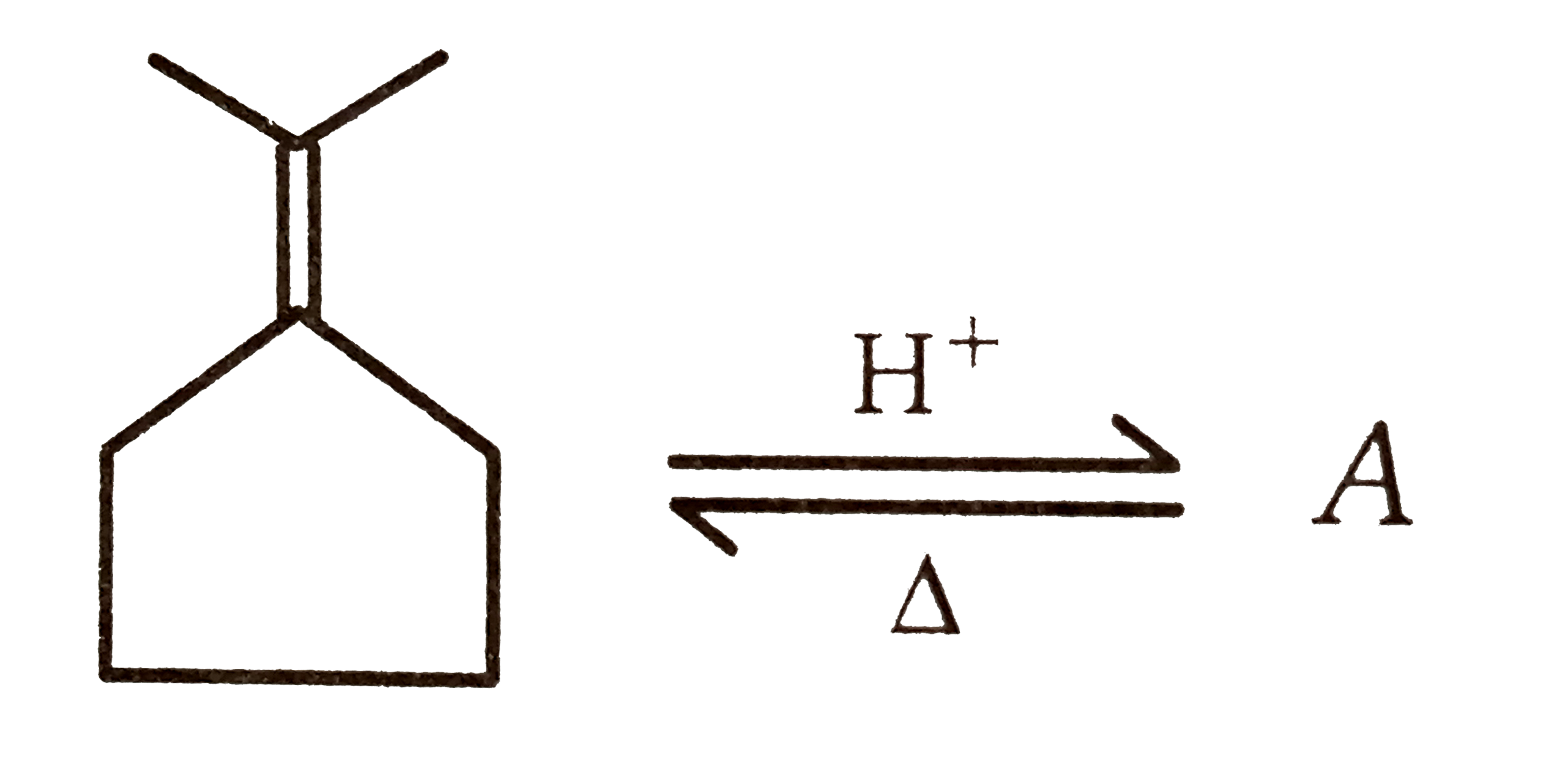
View Solution Major-product (A) is:
Major-product (A) is:
View SolutionDi-imid`(N_(2)H_(4))` is used to reduce double bond of:
View Solution
End product of the reactio is:
View Solution
Product (A) is:
View Solution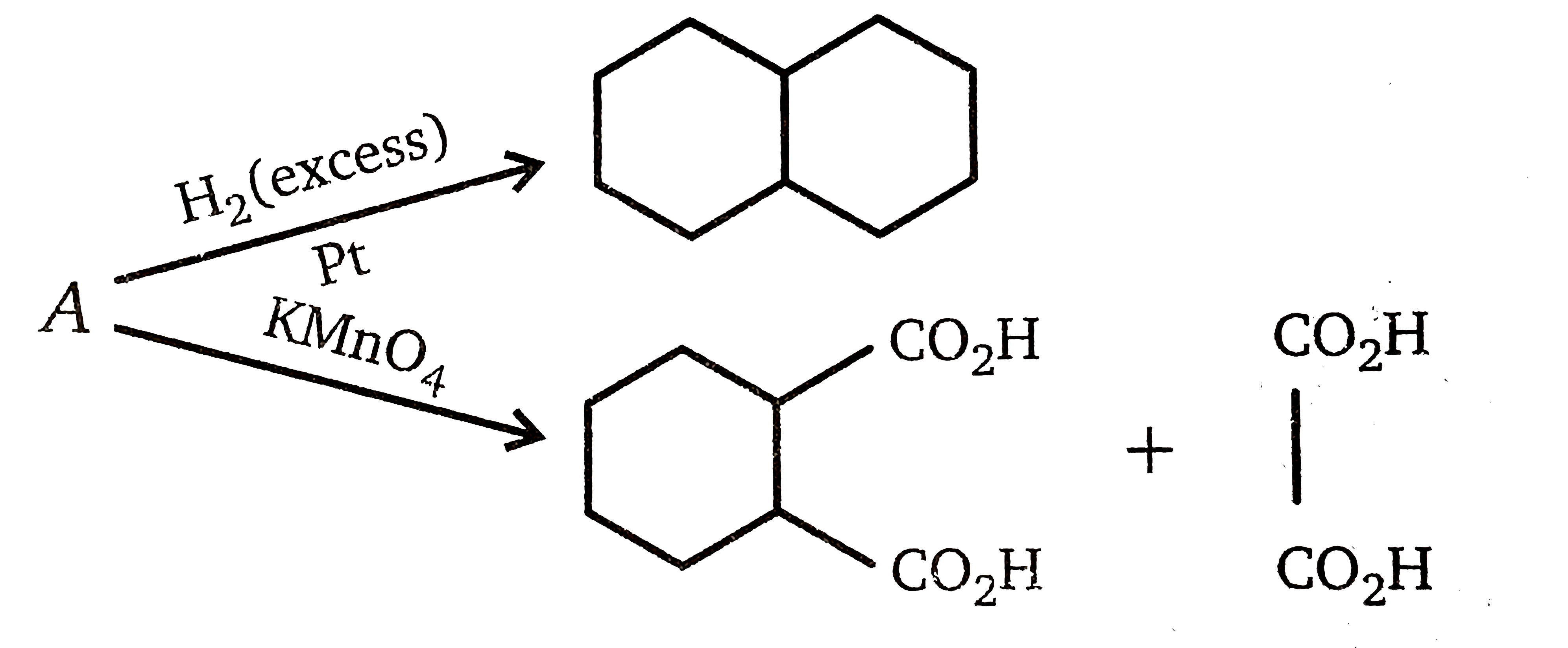 Compound (A) is:
Compound (A) is:
View Solution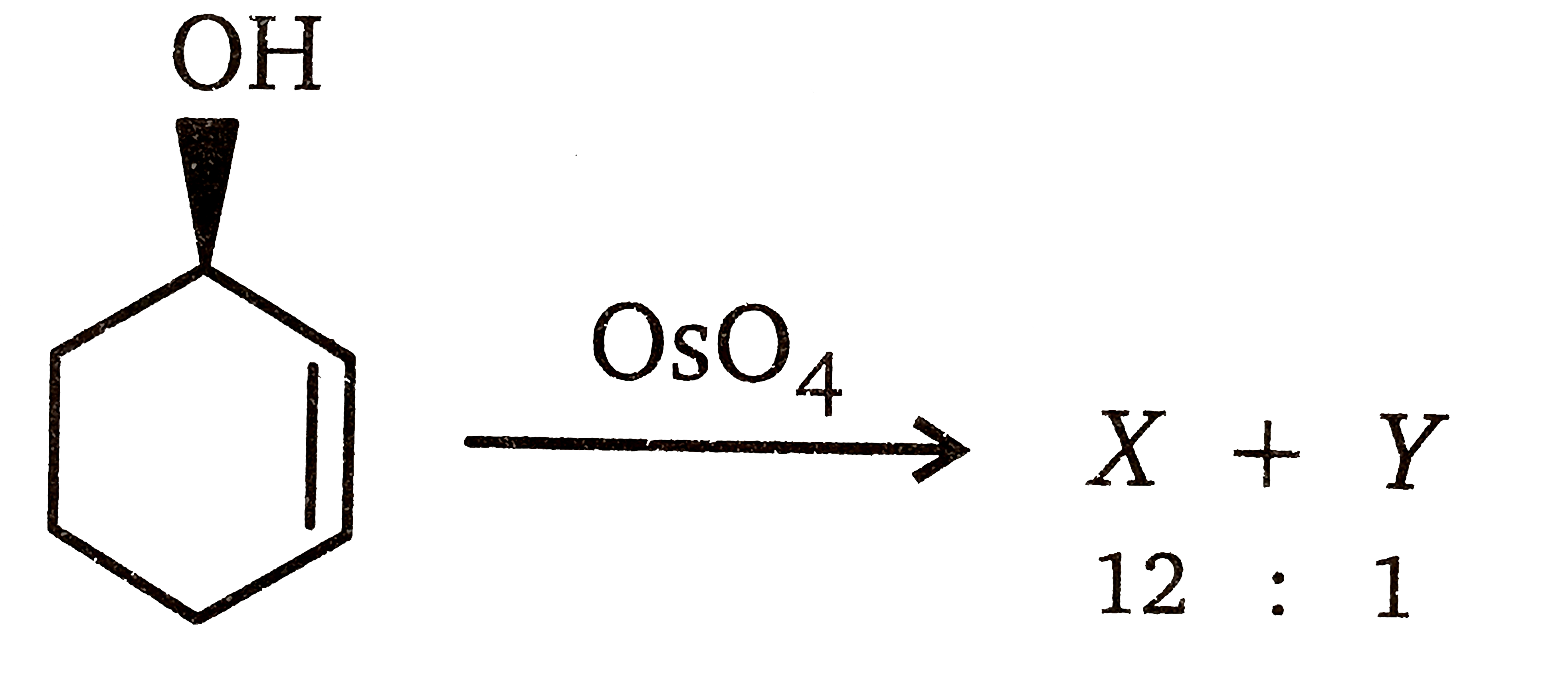 Product (X) will be:
Product (X) will be:
View Solution Product (C) will be:
Product (C) will be:
View Solution
MMPP `to` Magnesium mono peroxy phthalate.
Product (X) is:
View Solution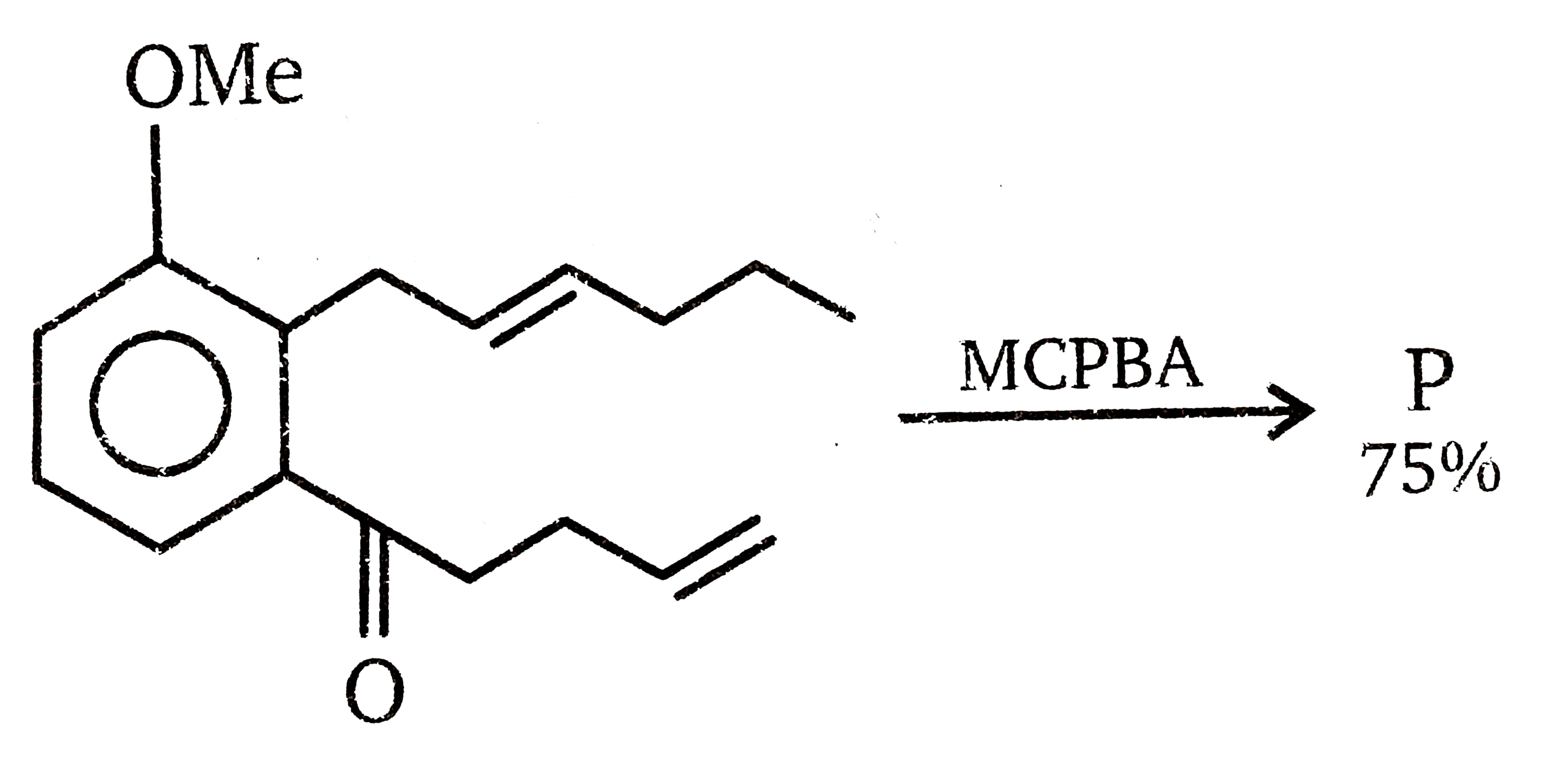 Product (P) is:
Product (P) is:
View Solution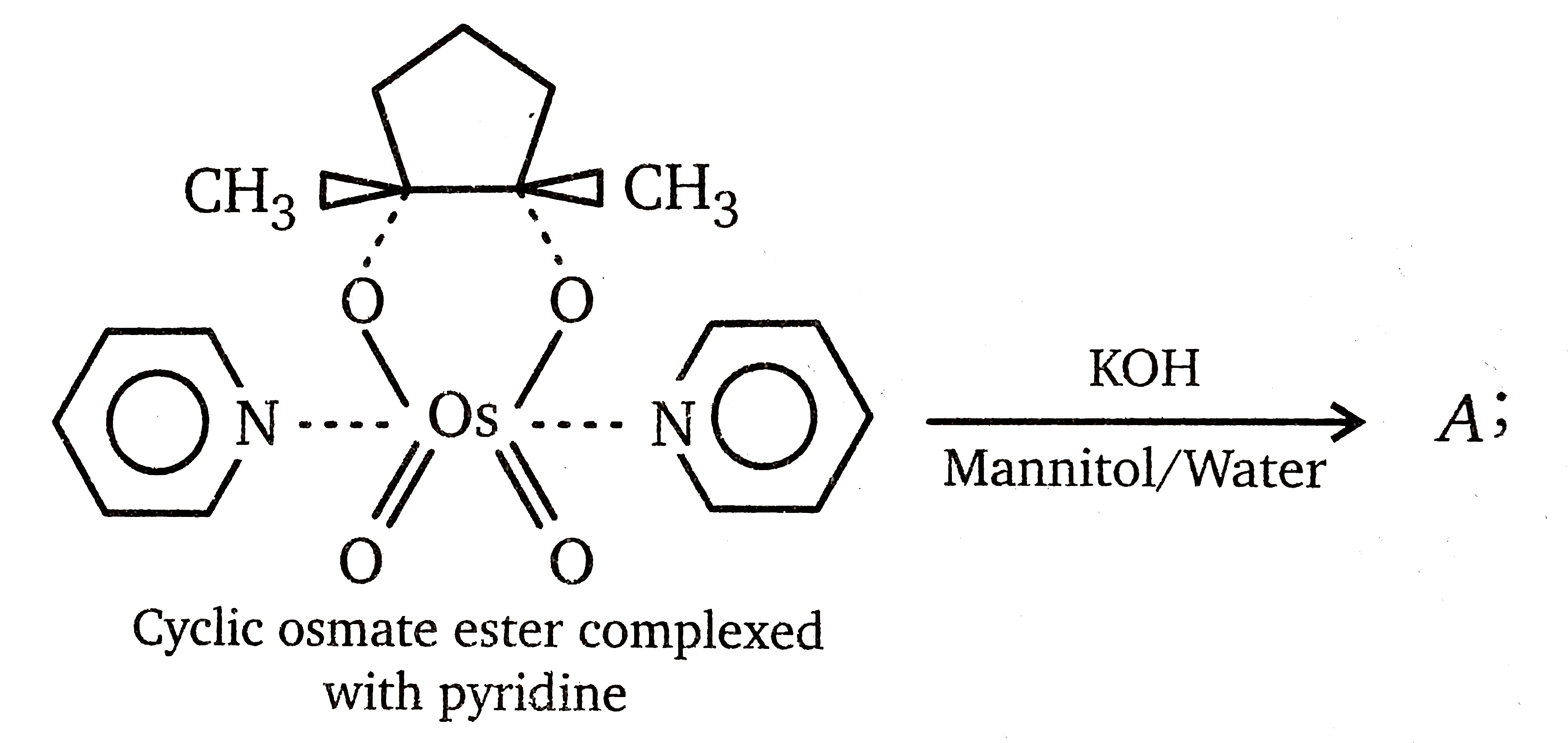 Product (A) is:
Product (A) is:
View Solution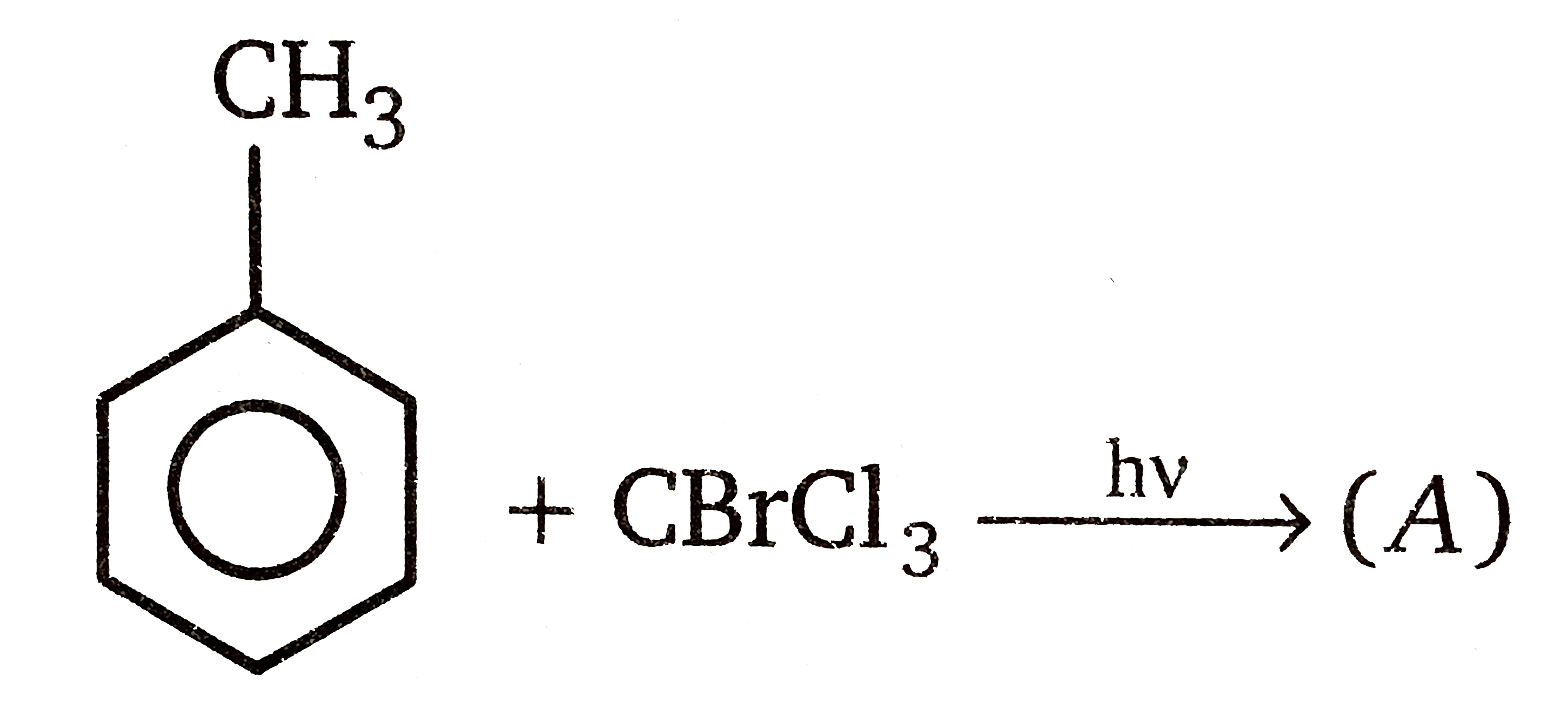 Product (A) is:
Product (A) is:
View Solution metachloroperbenzoic acid
metachloroperbenzoic acid
Product (A) of the above reaction is:
View SolutionThe major product of the following reaction sequence is:

View SolutionWhich one of the following compounds gives acetone `(CH_(3))_(2)C=O` as one of the product of its ozonlysis?
View SolutionAddition of HCl to 3, 3-dimethyl-1-butene yields two products, one of which has a rearranged carbon skeleton. Among the following carbocations, selectr the possible intermediates in that reaction?

View SolutionConversion of cyclohexene to cyclohexanol can be conveniently achieved by:
View SolutionTrans-cyclohexane-1,2-diol can be obtained by the reaction of cyclohexene with
View SolutionBromination of (E)-2-butenedioic acid gives
View SolutionThe major product formed during the reaction of 1-methyl cyclopentene with `CH_(3)CO_(3)H` is
View Solution , product (B) of the reaction is:
, product (B) of the reaction is:
View Solution `underset("Cyclic ester")("lactone")`
`underset("Cyclic ester")("lactone")`
View Solution (P), product (P) is:
(P), product (P) is:
View SolutionWhat is the major product expected from the following reaction?

View Solution`CH_(3)-CH=CH_(2)overset(Br_(2)//hv)underset(("low conc."))(to)(A)`, Product (A) of the reaction is:
View Solution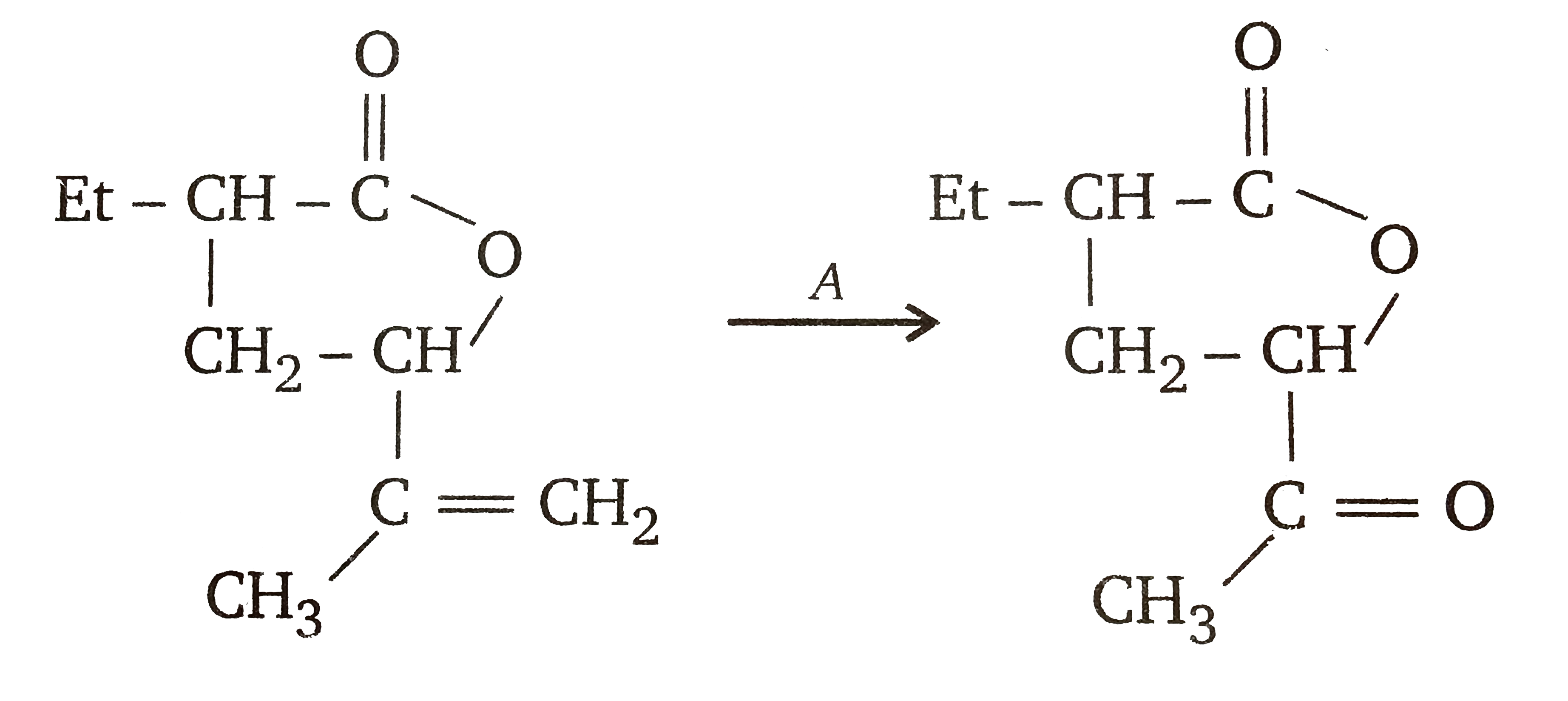 : Reagent (A) in the reaction is:
: Reagent (A) in the reaction is:
View Solution Product of the reaction is:
Product of the reaction is:
View SolutionWhich compound is a possible product from addition of `Br_(2)` to 1-butene?
View SolutionAddition of `Br_(2)` to cis-2-butene would give a product which is:
View SolutionAddition of `Br_(2)` to trans-2-butene would give a product which is:
View SolutionAddition of `OsO_(4)` to cyclopentene would give a product which is :
View SolutionAddition of `BH_(3)` followed by `H_(2)O_(2)` to trans-2-butene would give a product which is:
View SolutionComplete the following reaction

View SolutionThe major product of the following reaction is:
`CH_(3)-CH=CH_(2)+HBr overset((C_(6)H_(5)CO)_(2)O_(2)" peroxide")(to)`
View Solution
Identify (B):
View SolutionWhich of the following is a mojor product of the reaction shown below?

View SolutionIn methyl alcohol solution, bromine reacts with ethyle (ethene) to yield `BrCH_(2)CH_(2)OCH_(3)` in addition to 1, 2-dibromoethane because
View SolutionWhich of the following compound was the starting material for the oxidation shown below?

View SolutionWhich series of reactions will achieve the following transformation?

View SolutionTaking into account the stability of various cycloalkanes and carbocations, as well as the rules governing mechanisms of carbocation rearrangements, what is the most likely product of this reaction?

View SolutionA triene is treated with ozone followed by zinc in acetic acid to give the following three products. What is the structure of the triene?

View SolutionWhich of the following compound would yield trialkylborane shown below when treated with `BH_(3)//THF`?
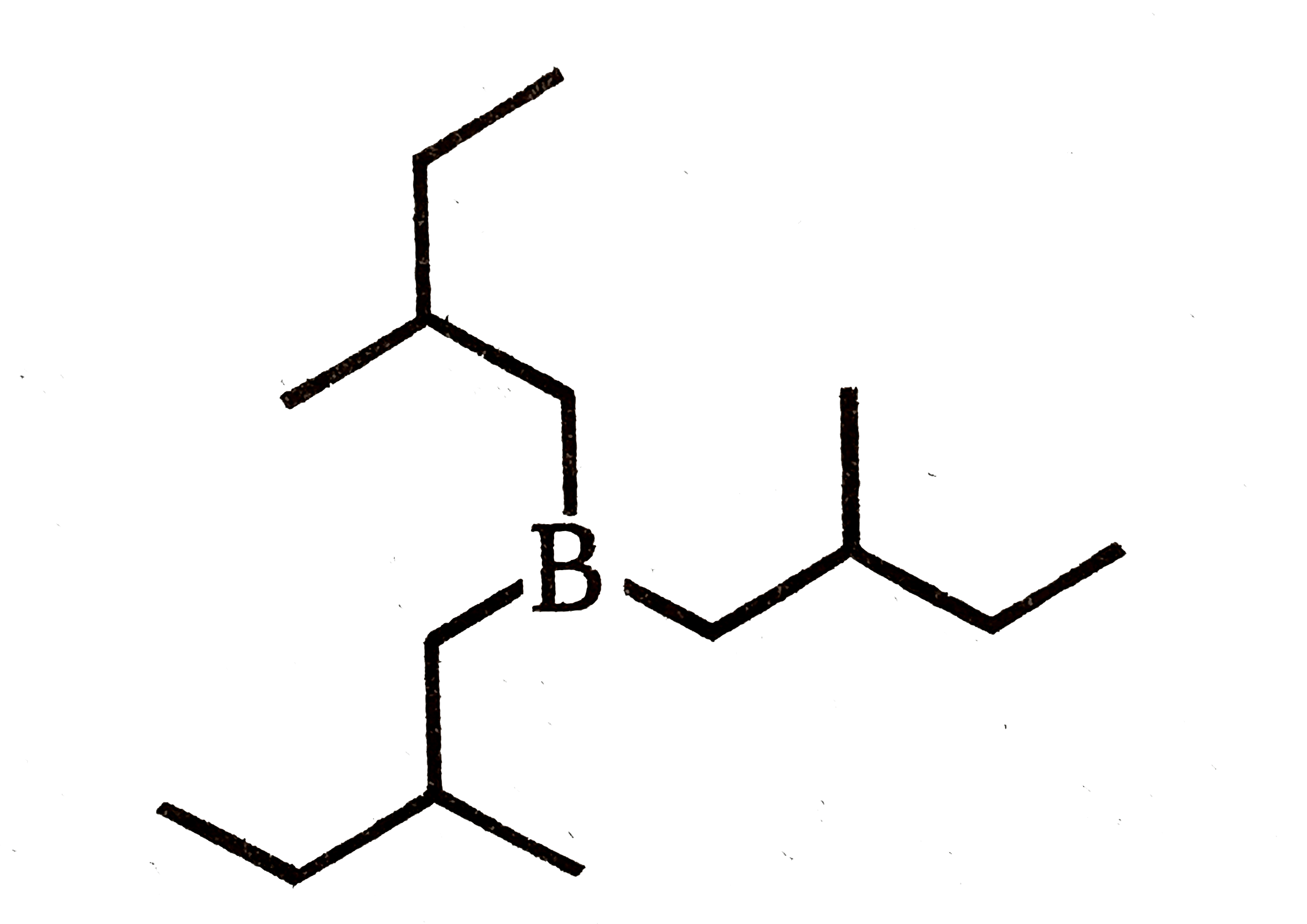
View SolutionIf the following compound is treated with Pd/C in excess of hydrogen gas, how many stereoisomers of the product will be obtained?

View SolutionWhich is the most precise designation of stereochemistry for the products formed electrophilic addition of DBr to 1-methylcyclohexene? (`D= .^(2)H`, an isotope of hydrogen)
View SolutionConsider the addition of HBr to 3,3-Dimethyl-1-butene shown below. What is the best mechanistic explanation for the formation of the observed product?

View SolutionPropene `CH_(3)CH=CH_(2)` can be converted into 1-propanol by oxidation. Indicate which sets of reagents amongst the following is ideal to effect the above converseion?
View SolutionWhich is the most suitable reagent among the following distinguish comound (3) from the others?
(1) `CH_(3)C-=C-CH_(3)` (2) `CH_(3)CH_(2)-CH_(2)-CH_(3)`
(3) `CH_(3)CH_(2)C-=CH` (4) `CH_(3)CH=CH_(2)`
View SolutionThe principal organic product formed in the reaction given below is:
`CH_(2)=CH(CH_(2))_(8)COOH + HBr overset("peroxide")(to).......`
View SolutionWhen 2-butyne is treated with `H_(2)//Pd - BaSO_(4)`, the product formed will be:
View SolutionIn the reaction, `CH_(3)C-=C-CH_(3)overset((i)X)underset((ii)Zn//H_(2)O)(to)CH_(3)-underset(O)underset(||)(C)-underset(O)underset(||)(C)-CH_(3)`, X is:
View SolutionWhich of the following alkene on catalytic hydrogenation gives cis and trans-isomers?
View SolutionIn the reaction of hydrogen bromide with an alkene (in the absence of peroxides), the first step of the reaction is the ........ To the alkene.
View SolutionWhich of the following alcohols cannot be prepared from hydration of an alkene?
View SolutionWhich of the spices shown below is the most stable form of the intermediate in the electrophilic addition of `Cl_(2)` in water to cyclohexene to form a halogydrin?
View SolutionThe reaction, `(CH_(3))_(2)C=CH_(2)+Br^(**)to(CH_(3))_(2)overset(**)(C)-CH_(2)Br` is an example of a/an......... Step in a radical chain reaction.
View SolutionWhich of the following most accurately describes the first step in the reaction of hydrogen chloride with 1-butene?
View SolutionWhich of the following best describes the flow of electrons in the acid-catalyed dimerizantion of `(CH_(3))_(2)C=CH_(2)`?
View SolutionHydroboration of 1-methylcyclopentene using `B_(2)D_(6)`, followed by treatment with alkaline hydrogen peroxide, gives
View Solution
The correct statement with respect to the above pair of reactions are that
(I) the reactions are stereospecific
(II) (X) is erythro and (Y) is threisomer
(III) (X) is threo and (Y) is erythro isomer
(IV) each of (P) and (Q) gives a mixture of (X) and (Y)
View Solution , product (B) of the reaction is:
, product (B) of the reaction is:
View Solution Product (C) is:
Product (C) is:
View SolutionWhich of the following will give a mixture of cis and trans-1,4-dimethyl cyclohexane, when undergo catalytic hydrogenation?
View SolutionAn optically active compound A with molecular formula `C_(8)H_(14)` undergoes catalytic hydrogenation togive meso compound, the structure of (A) is:
View Solution
How many products will be formed in above reaction?
View Solution Product of the reaction is:
Product of the reaction is:
View Solutioncis-2-butene`overset(HBr)underset("Peroxide")(to)`product, Product of the reaction is:
View Solution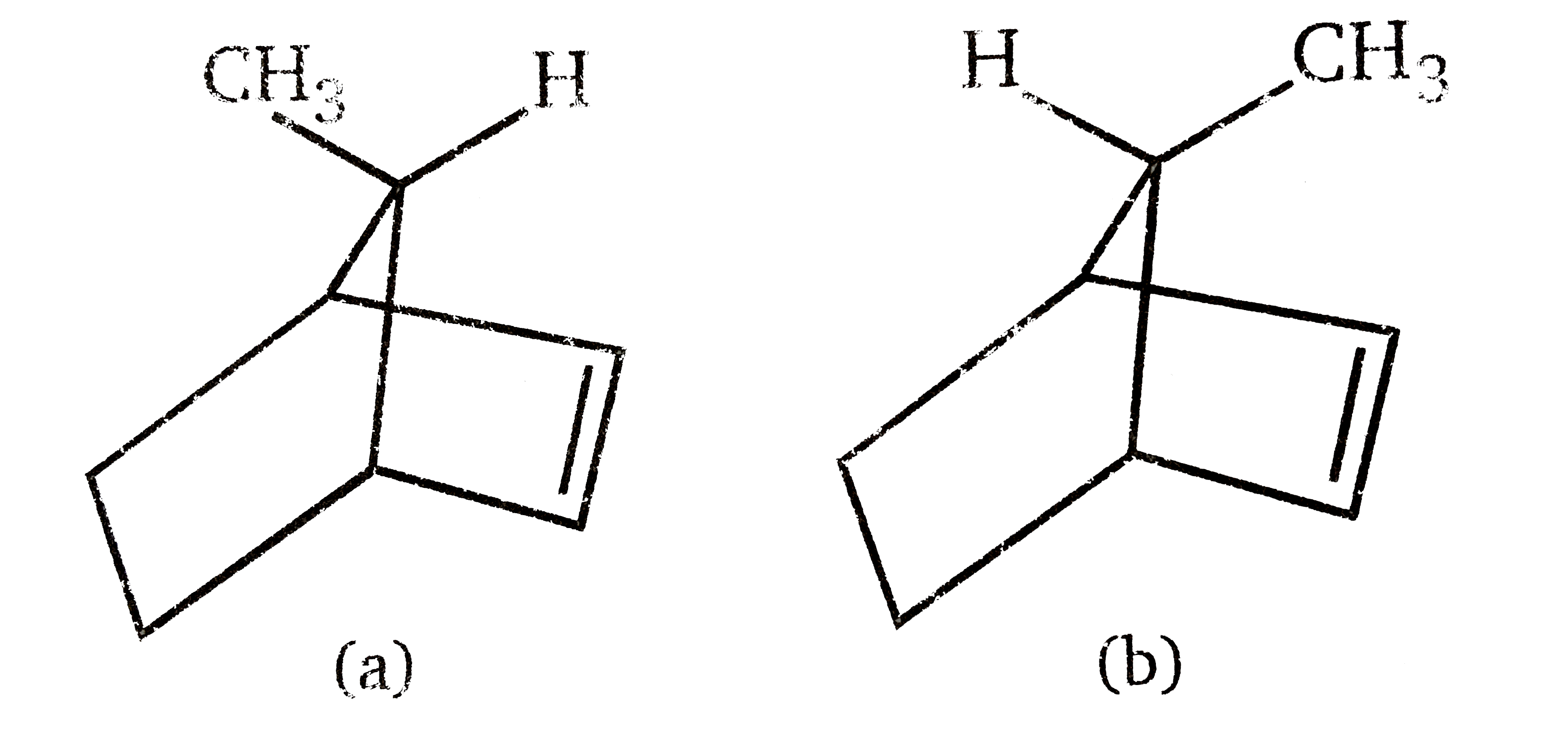
Rate of reaction towards reduction using `(H_(2)//Pt)`:
View Solution
Product A of the above reaction is:
View Solution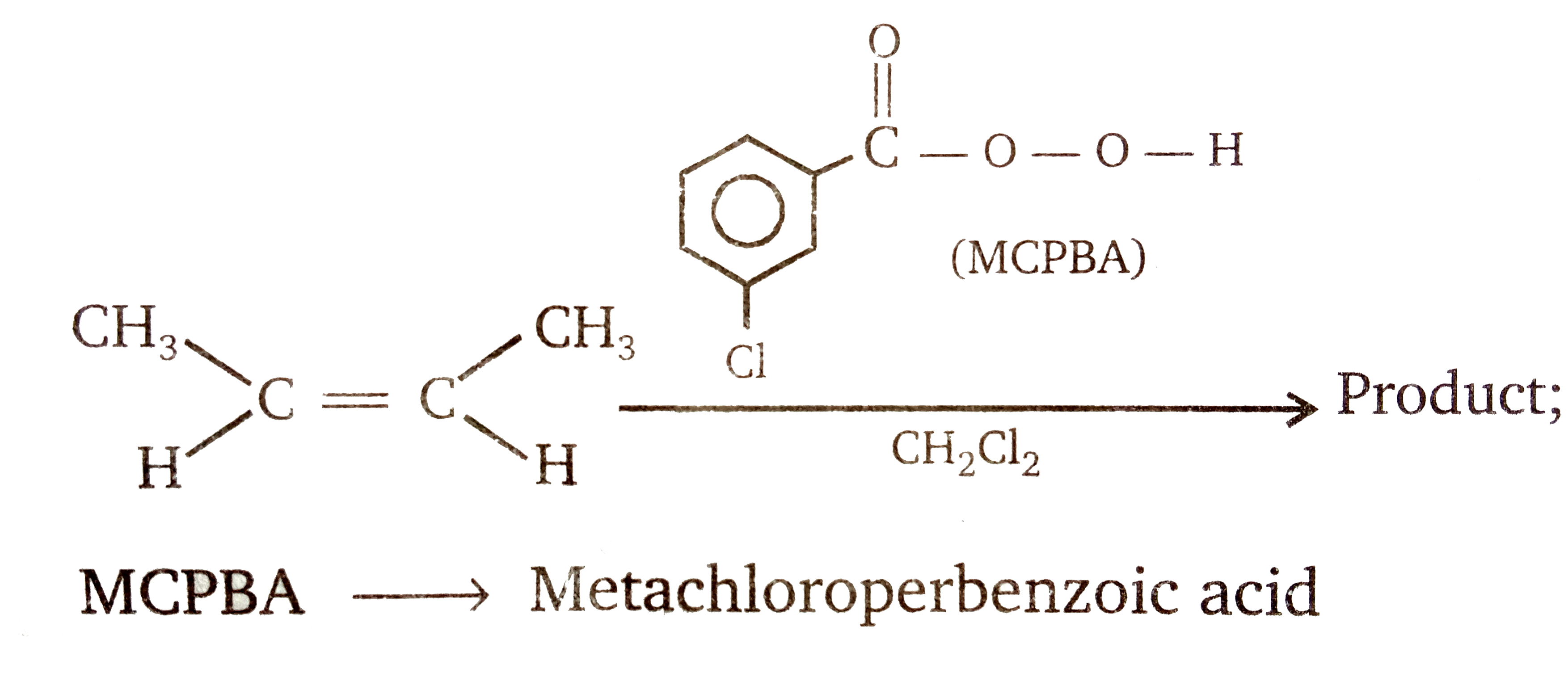 , product is:
, product is:
MCPBA `to` Metachloroperbenzoic acid
View Solution , product of the reaction is:
, product of the reaction is:
View Solution`CH_(3)-CH=CH_(2)overset((1) THF:BD_(3))underset((2) CH_(3)CO_(2)T)(to)(A)`, Product (A) of the above reaction is:
View SolutionOptically active isomer (A) of `(C_(5)H_(9)Cl)` on treatment with one mole of `H_(2)` gives an optically inactive compound (B) compound (A) will be :
View SolutionAn organic compound `C_(4)H_(6)` on ozonolysis give `HCHO, CO_(2), CH_(3)CHO`. Compound will be:
View Solution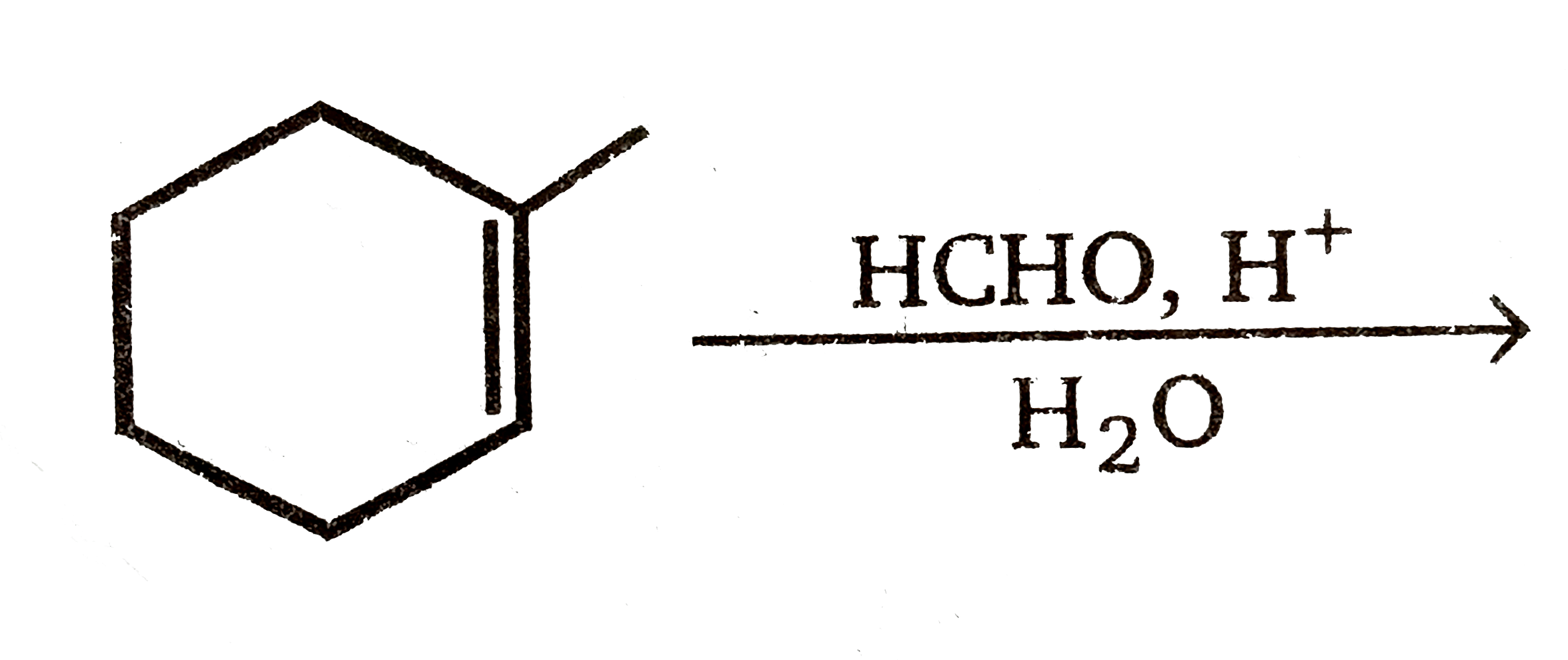 major product of this reaction is,
major product of this reaction is,
View Solution`CH_(3)-underset(CH_(3))underset(|)overset(CH_(3))overset(|)(CH)-overset(KMnO_(4))to (A) overset(H^(+))underset(Delta)to (B) overset(HBr) underset(RO OR) to (C) `
Product (C) in the above reaction is:
View Solution
Exercise questions and complete solutions for chapter HYDROCARBONS (ALKENES) of MS CHOUHAN CHEMISTRY (HINGLISH) of Class 11